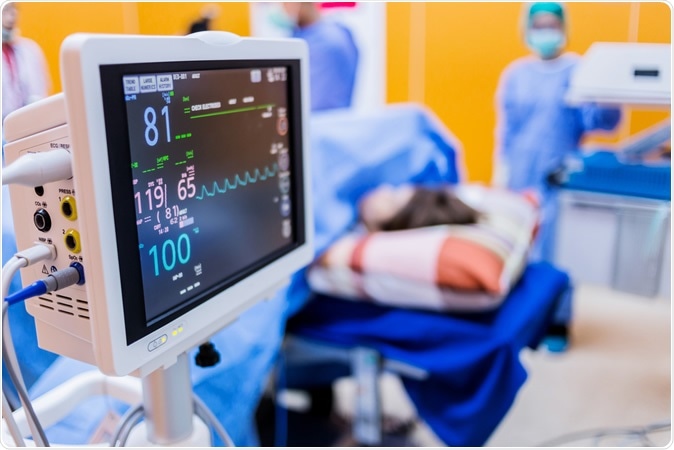Hospitals and healthcare systems worldwide are overwhelmed, with many facilities full of patients requiring emergency care for coronavirus disease (COVID-19) that is caused by the severe acute respiratory syndrome coronavirus 2 (SARS-CoV-2). COVID-19 disease causes severe respiratory illness in patients, with some needing mechanical ventilation.
With the lack of ventilators available in hospitals, patients are at a very high risk of death. The staff working on the front lines are also facing an increased risk of contracting the virus. Hospitals should prepare for the booming number of cases as the total global toll has topped 3 million.

Study: Hospital Preparedness for COVID-19: A Practical Guide from a Critical Care Perspective. Image Credit: WHYFRAME / Shutterstock
Influx of COVID-19 patients
As hospitals face this growing caseload, they require a coordinated approach with multidisciplinary teams to boost efficiency, conserve personal protective equipment (PPE), and protect the staff.
A new study, published in the American Journal of Respiratory and Critical Care Medicine, highlights hospital preparedness amid the coronavirus pandemic. The researchers from Weill Cornell Medicine and the New York-Presbyterian/Weill Cornell Medical Center provide an insight into what can happen when there is an influx of patients who are critically ill.
New York, for one, is the hardest-hit state from the pandemic in the United States. It has a total case toll of over 295,000 infections and a death toll of nearly 23,000 people. In response to the estimated potential impact of COVID-19 on New York City hospitals, the Weill Cornell Medicine and New York-Presbyterian/Weill Cornell Medical Center have devised a plan to help cope with the dramatic influx of patients.
How can hospitals prepare?
The institution has a highly experienced team of specialists and health workers, who utilized early lessons from existing data to help them plan for an impending surge of cases. Firstly, it is vital to plan early for a future outbreak, properly allocating resources to reduce the risk of being understaffed and lacking essential equipment, such as ventilators.
"Plan early for beds, equipment, and people. Listen to predictions from epidemiologists about the numbers to expect. Plan for daily remote communications platforms—support front line staff. Food, scrubs, hand lotion, mental health support--it all counts," Dr. Lindsay Lief, medical director of the medical intensive care unit at NewYork-Presbyterian/Weill Cornell Medical Center, said.
With the rapidly evolving data on how infectious COVID-19 is, including the fact that there are asymptomatic carriers, the hospital should ascertain the adequate supply of PPEs for the staff, while expanding the capacity of the intensive care unit, including ventilator capacity.
Amended protocols
The new guidelines devised by the team deal with accelerating the training of the clinical staff to deal with patients suffering from acute respiratory distress syndrome, a condition wherein fluid accumulates in the alveoli or air sacs of the lungs. In this condition, the vital organs are deprived of the needed oxygen to survive.
With the new protocols, the health care team, including doctors, nurses, respiratory therapists, and even non-clinical staff, started to share responsibilities. For example, physical and occupational therapies may have lesser work today due to fewer patients. They can still contribute by being in the "proning team," a group of people who implement body positioning with the patient lying on the stomach to improve oxygen levels.
Further, the team emphasized that the key to an effective hospital system amid the coronavirus health crisis is clear communication.
"Hospital communication regarding infection prevention and control, PPE, state, and CDC guidelines provides not only information but relieves staff anxiety. Besides, daily phone conferences among physicians caring for patients with COVID helps remind us of the essential and ideal care for respiratory failure and to put in context what we are learning from colleagues around the world and new research as it comes to light," Dr. Lief said.
Clear communication will help strengthen the protocol and rules in hospital settings, providing a safe working environment for doctors, nurses, and other health workers.
Source:
Journal reference: